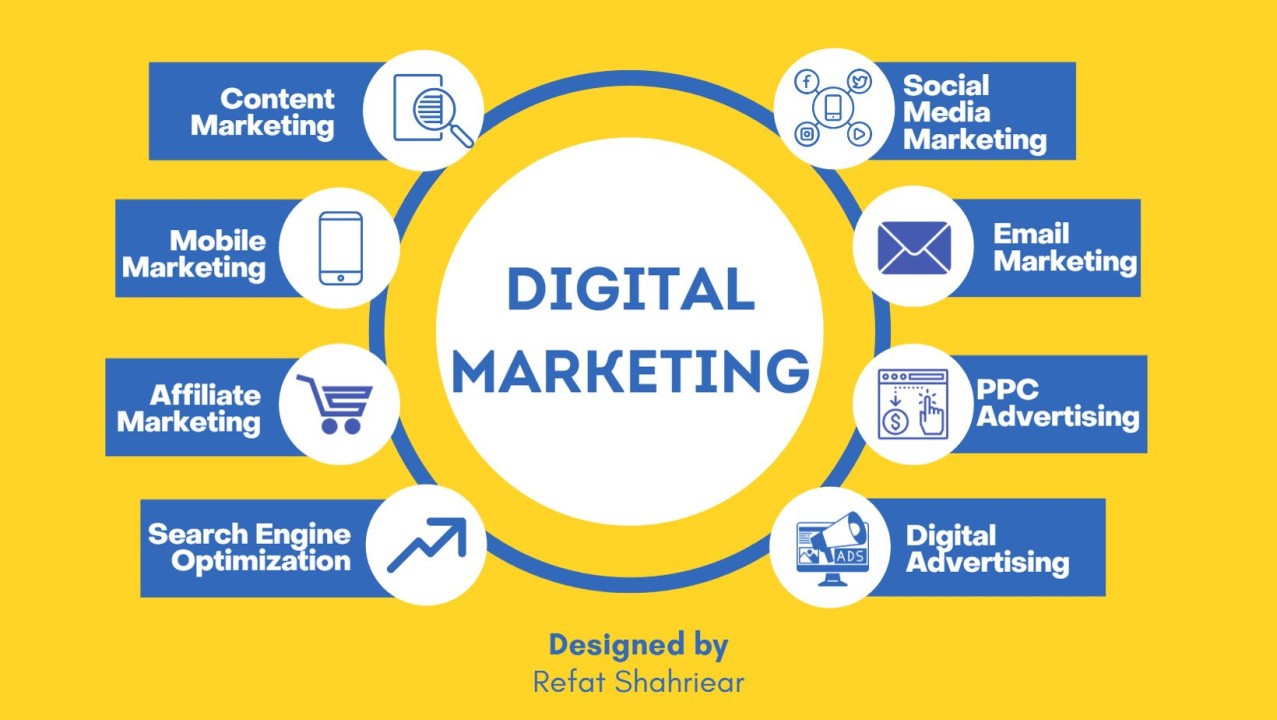Equip Your Brand with The Ad Firm Digital Marketing: Transformative Strategies Await
Enhance User Experience and Drive Website Traffic With Responsive Web Style
In today's electronic landscape, where individuals are accessing sites from a wide range of tools, receptive web layout has ended up being more important than ever before. With its capability to adapt and seamlessly adjust to various display sizes, receptive layout not just enhances customer experience however additionally drives web traffic to your website.
Why Receptive Web Layout Matters
Receptive website design is an important facet of modern internet development because of its capacity to guarantee optimum user experience throughout various tools and display sizes. With the expansion of smartphones, tablets, and various other mobile phones, it has come to be vital for websites to adapt and supply seamless performance no matter of the tool being used.
The main reason receptive web style issues is that it permits users to have a consistent and satisfying searching experience, no matter of the tool they are using. A responsive site instantly readjusts its design, layout, and web content elements to fit the screen size and resolution of the device, guaranteeing that individuals can quickly browse and engage with the web site without any kind of aggravation or aggravation.
Furthermore, responsive website design also plays a considerable duty in search engine optimization (SEARCH ENGINE OPTIMIZATION) Search engines, such as Google, prioritize sites that are responsive and mobile-friendly in their search results page. By incorporating receptive layout principles, sites can improve their exposure and ranking, leading to increased natural web traffic and prospective customers.

Boosting Customer Engagement Through Responsive Style
Maximizing customer engagement is an essential objective of receptive layout, as it ensures that individuals can conveniently accessibility and connect with website material on any type of gadget. With the raising usage of tablets and smartphones, it is important for web sites to adjust to various display dimensions and resolutions. Receptive layout enables websites to automatically adjust their layout and content to offer a seamless individual experience throughout gadgets.
One of the primary methods receptive style enhances customer involvement is by reducing load times. With a responsive website, users don't have to wait for separate mobile versions to load, leading to quicker access to content. This enhanced speed results in greater individual satisfaction and urges them to invest more time on the site.
Additionally, receptive layout improves user engagement by boosting navigating and interface (The Ad Firm digital marketing). When an internet site is made responsively, buttons and food selections are enhanced for touch interactions, making it much easier for customers to engage and navigate with the site on their mobile tools. This user-friendly and user-friendly experience maintains individuals engaged and motivates them to explore even more of the website
In addition, responsive layout enables for far better material presence and readability. By adapting the format and font dimensions to various gadgets, receptive internet sites make sure that users can quickly understand the material and review. This improves individual engagement by reducing the requirement for scrolling or zooming to check out the message.
Increasing Site Website Traffic With Responsive Website Design
With the expanding appeal of smart phones, having an internet site that is receptive to various display dimensions and resolutions is essential for driving increased traffic. In today's digital landscape, users are accessing sites from a range of tools such as smart devices, tablet computers, and home computer. Each of these gadgets has different screen sizes and resolutions, and if your website is not designed to adapt to these variants, it can bring about an inadequate customer experience and a loss of possible website traffic.
Receptive internet style makes sure that your internet site looks and operates efficiently across all devices. By using adaptable grids, liquid photos, and media questions, receptive layout allows your web site to immediately adjust its navigating, design, and content to fit any screen size. This means that customers will certainly have a seamless surfing experience despite whether they are utilizing a small smartphone or a huge sites desktop computer.
Trick Aspects of Reliable Responsive Layout
Efficient receptive style incorporates a number of key aspects that ensure a smooth user experience throughout various gadgets. Among these elements is adaptable grids and layouts. By utilizing relative systems like percents instead of dealt with systems like pixels, designers can develop layouts that adjust and scale to fit different screen dimensions. This allows material to be presented in a visually enticing and readable way on any kind of device.
One more vital component is media queries. These allow designers to apply different styles and designs based upon the characteristics of the individual's gadget, such as display dimension and orientation. By making use of media queries, developers can maximize the presentation of material for each and every tool, guaranteeing that it is readable and quickly obtainable.
Responsive pictures are additionally critical in effective receptive layout. Images that are also large can reduce web page tons times on smart phones, while pictures that are as well little might show up pixelated on larger displays. By utilizing techniques such as receptive photo resizing and careless loading, developers can make certain that pictures are appropriately sized and optimized for each tool.
Last but not least, efficient responsive design involves a mobile-first technique. This indicates creating and prioritizing web content for smart phones first, and afterwards increasing and improving the design for bigger displays. This method guarantees that the most vital material is easily obtainable on smaller sized screens, while still giving a rich experience on bigger gadgets.
Ideal Practices for Implementing Responsive Web Design
Applying responsive website design requires mindful consideration of numerous finest techniques to make sure an optimal individual experience across different tools. Right here are some key finest practices to comply with when applying responsive internet design.
Firstly, it is important to focus on mobile users. With the boosting prominence of smart phones, making for mobile-first has ended up being crucial. Start by making for smaller screens and afterwards progressively improve the format for larger screens.

An additional important ideal practice is to maximize pictures for various screen resolutions. Huge images can reduce down the loading time of your internet site, especially on mobile tools with slower connections. Usage responsive pictures that can be resized based upon the business web page design gadget's display resolution to improve efficiency.
Additionally, examination your website on various devices and screen dimensions to ensure a regular and seamless experience. There are various screening devices offered that can aid you determine any kind of issues and make needed changes.
Last but not least, focus on functionality and availability. Make certain that your website is simple to browse, with succinct and clear web content. Ensure that your internet site comes to individuals with impairments and adheres to availability guidelines.
Final Thought
In conclusion, responsive web design plays a critical role in enhancing individual experience and driving website traffic to web sites. By embracing responsive design concepts, web sites can guarantee ideal watching experiences across different tools, leading to boosted individual engagement.
Optimizing individual involvement is a key goal of responsive layout, as it ensures that users can conveniently access and connect with site content on any device. Responsive design allows websites to immediately change their design and material to provide a seamless user experience across gadgets.
Furthermore, responsive layout enhances user involvement by improving navigation and individual interface.Responsive photos are likewise crucial in effective receptive style. By embracing responsive layout principles, web sites can guarantee optimum viewing experiences throughout different tools, leading to increased individual interaction.